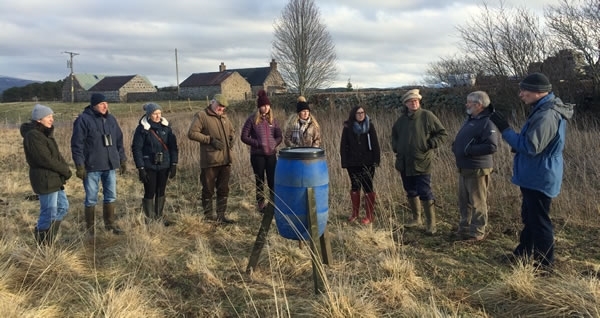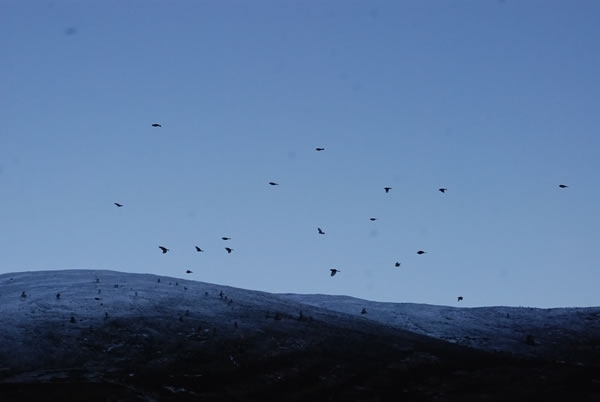By Merlin Becker, Policy & Advisory Officer Scotland
Like many others within the GWCT, I follow the “three legged stool” maxim of nesting cover, brood-rearing cover and efficient predator control. More recently we usually add an additional leg of winter feeding to the list for sustainable game and wildlife management.

One of the fundamental elements to wildlife conservation, especially on farmland habitats, is the provision of food. This can incorporate measures such as wild bird seed strips, conservation headlands and a very common option across sporting estates, supplementary hopper feeding. The latter is particularly important in the late winter and early spring. With the winter in full swing the bird life here on GWSDF Auchnerran is getting particularly peckish
 The 2016/17 season marked the beginning of our winter feeding programme up on Auchnerran. The main aim behind providing feed on the farm is to support our breeding stock of wild pheasants for the shoot but providing wheat in these feeders is also benefitting many other species. We have started relatively small with the number of feed hopers this year, with only six being fully operational at present. We do however intend on increasing this to a minimum of twenty this season with Marlies Nicolai (GWSDF Research Assistant) and Ruth Highley (GWSDF placement student) closely monitoring the feeding stations with trail cameras.
The 2016/17 season marked the beginning of our winter feeding programme up on Auchnerran. The main aim behind providing feed on the farm is to support our breeding stock of wild pheasants for the shoot but providing wheat in these feeders is also benefitting many other species. We have started relatively small with the number of feed hopers this year, with only six being fully operational at present. We do however intend on increasing this to a minimum of twenty this season with Marlies Nicolai (GWSDF Research Assistant) and Ruth Highley (GWSDF placement student) closely monitoring the feeding stations with trail cameras.
We were very fortunate this year to get a tonne of wheat for scot free (excuse the tartan pun), from a very kind head keeper on a local pheasant shoot near Aboyne. It is first class support such as this that keeps the GWCT ticking over year on year and we could never achieve all our research and demonstrative success without it. So thank you to all those unnamed individuals, land owners, farmers and managers.
Linnet, chaffinch, pheasant and dunnock have all been seen availing of the feed hopper grain over the past few weeks. In the fullness of time we aim to have many more hoppers dotted across the farm to help all our bird life through the “hungry gap” of the year when seed and other food resources are particularly low.

You can play your part in providing supplementary feeding to garden, farm and/or urban birds by setting up small feeding stations in your locality or even by regularly scattering grain in fields where you see birds foraging naturally. To find out more please download the GWCT’s leading guidelines for successful gamebird and songbird feeding.